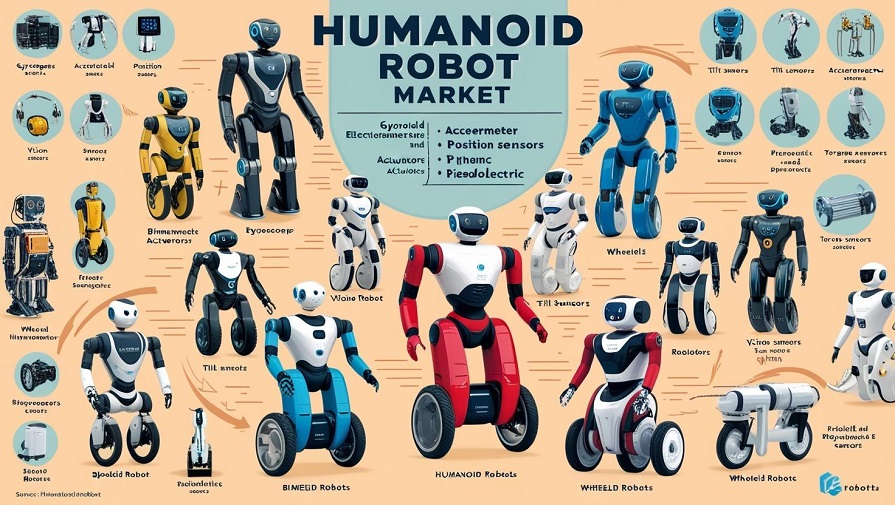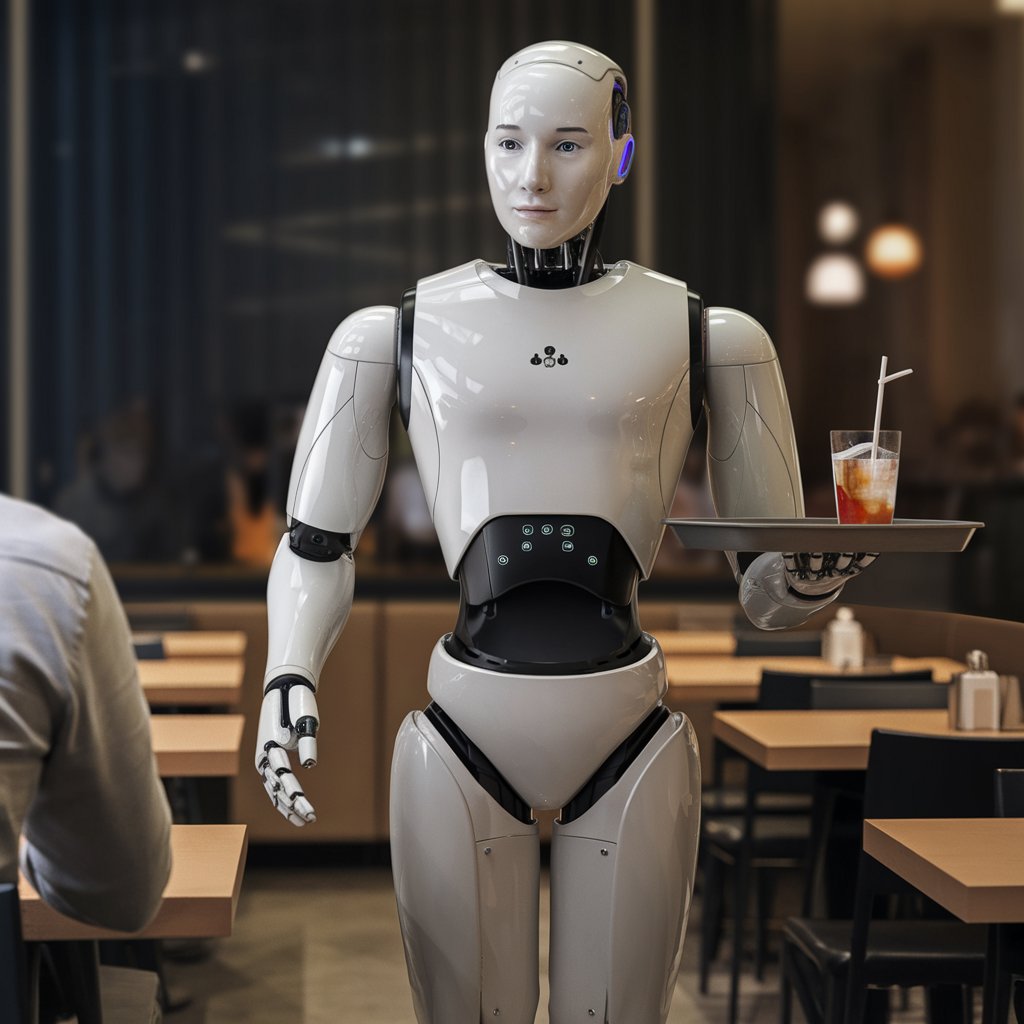The rapid advancements in artificial intelligence (AI) and robotics are reshaping industries across the globe. One of the most exciting innovations in this field is the development of humanoid robots — machines designed to resemble humans in appearance and behavior. These robots, powered by AI and sophisticated robotics, are poised to transform the workforce, redefining the way industries function and interact with technology. From enhancing productivity to improving human-robot collaboration, humanoid robots are becoming a significant part of the workforce revolution.
Understanding Humanoid Robots: The Intersection of AI and Robotics
A humanoid robot is a machine designed to perform tasks in a manner similar to humans. These robots are often equipped with advanced features like facial recognition, speech processing, and motor functions that mimic human actions, such as walking, talking, and handling objects. The underlying technologies that power humanoid robots include AI algorithms, machine learning, and deep learning, which allow them to analyze data, recognize patterns, and respond to their environment in real time.
Humanoid robots are being built to interact with humans in a more intuitive and natural way, which makes them highly versatile and suitable for a wide array of industries, such as healthcare, education, retail, hospitality, and manufacturing.
The humanoid robot market size to grow from USD 2.03 billion in 2024 and is expected to reach USD 13.25 billion by 2029, growing at a CAGR of 45.5% from 2024 to 2029. The key factors leading to the growth of the humanoid robot market include the increasing demand for humanoid robots for medical applications. There is an increasing demand of humanoid robots in the healthcare industry as they offer assistance to medical professionals as well as enhance the quality of care to the patients. Humanoid robots are being widely deployed in hospitals and medical centers, where they perform a variety of tasks and functions such as collection of patient information, allowing humanoid robots to interact with patients and gather vital data.

Transforming the Workforce: Humanoid Robots as Co-Workers
In the past, robots were primarily confined to the world of manufacturing, where they performed repetitive and physically demanding tasks. However, the evolution of humanoid robots is changing that paradigm. These advanced machines are capable of performing more complex and human-like tasks, making them valuable assets in various sectors. The key to their success lies in their ability to collaborate with humans and enhance the workforce rather than replace it.
1. Enhancing Productivity in Manufacturing
One of the most significant contributions of humanoid robots in the workforce is in manufacturing environments. Traditional industrial robots are excellent at performing repetitive tasks, but they lack the ability to adapt to complex, dynamic environments. Humanoid robots, on the other hand, can work alongside human operators and take on a wider range of responsibilities. These robots can carry out intricate tasks that require dexterity, precision, and flexibility — qualities that are essential in modern manufacturing processes.
For example, humanoid robots can assist in assembly lines, quality control, inventory management, and even equipment maintenance. By freeing human workers from mundane and physically taxing tasks, humanoid robots allow employees to focus on more creative and higher-value work. This symbiotic relationship between humans and robots leads to greater efficiency and productivity.
2. Improving Customer Interaction in Retail and Hospitality
In retail and hospitality industries, humanoid robots are transforming customer service by providing personalized, intelligent, and interactive experiences. These robots can greet customers, answer inquiries, provide product recommendations, and even guide visitors through complex spaces, such as shopping malls, airports, or hotels.
Humanoid robots are equipped with AI-powered voice recognition systems that can understand and respond to natural language, enhancing their ability to engage in meaningful conversations with customers. Additionally, their human-like appearance allows them to connect emotionally with customers, fostering trust and improving overall satisfaction.
For example, in retail stores, humanoid robots can assist customers by providing product information, helping with purchases, and managing the checkout process. Similarly, in hotels, they can check guests in, deliver room service, and even entertain them with interactive content.
3. Revolutionizing Healthcare and Elderly Care
One of the most impactful applications of humanoid robots is in healthcare and elderly care. With an aging global population, there is an increasing demand for assistance with tasks such as caregiving, patient monitoring, and companionship. Humanoid robots are stepping in to fill this gap, providing support for healthcare professionals and offering patients personalized care.
In hospitals, humanoid robots can assist medical staff with routine tasks like transporting supplies, disinfecting rooms, and providing non-medical assistance to patients. In elderly care settings, humanoid robots can monitor the health and well-being of senior citizens, remind them to take their medication, assist with daily activities, and provide companionship, reducing loneliness and improving quality of life.
Download PDF Brochure @ https://www.marketsandmarkets.com/pdfdownloadNew.asp?id=99567653
Challenges and Considerations for the Humanoid Robots Market
While humanoid robots hold tremendous potential, there are several challenges that need to be addressed before they can become fully integrated into the workforce.
Cost of Development and Implementation: Developing humanoid robots is expensive, particularly due to the complexity of creating machines that can mimic human movements and behaviors. The initial investment for companies looking to deploy humanoid robots may be significant, although costs are expected to decrease as the technology matures and becomes more widely adopted.
Human-Robot Interaction (HRI): One of the biggest challenges in deploying humanoid robots in the workforce is ensuring seamless and effective interaction between humans and machines. While robots can perform many tasks, they must be able to communicate and collaborate with humans in a natural, intuitive way. This requires sophisticated AI and machine learning algorithms that enable robots to understand human emotions, adapt to different environments, and make decisions in real time.
Ethical and Social Implications: The widespread adoption of humanoid robots raises questions about the impact on employment, privacy, and security. As robots take on more roles in the workforce, there may be concerns about job displacement and the implications for workers whose tasks are automated. Additionally, the use of humanoid robots in healthcare and personal settings raises issues about data security and the ethical treatment of robots.
Regulation and Standards: Governments and regulatory bodies will need to develop frameworks to ensure the safe deployment and operation of humanoid robots. These standards will cover everything from safety protocols and operational limits to ethical considerations surrounding AI decision-making and privacy.

The Future of Humanoid Robots: Innovation and Growth
Despite the challenges, the humanoid robot market is poised for significant growth. With ongoing advancements in AI, robotics, and machine learning, the capabilities of humanoid robots will continue to expand, enabling them to take on increasingly complex tasks and integrate seamlessly into the workforce.
As industries begin to embrace automation and digital transformation, humanoid robots will play a pivotal role in reshaping the future of work. Whether in manufacturing, healthcare, retail, or hospitality, these robots will enhance productivity, improve customer experiences, and provide valuable support in critical sectors.
In the coming years, we can expect to see more humanoid robots in our daily lives — not as replacements for humans but as collaborators that help us unlock new potential in our work and personal lives. As technology continues to evolve, the possibilities for humanoid robots are endless, and they will undoubtedly revolutionize the way we live and work.
Thehumanoid robot industry is on the cusp of a revolutionary transformation. With advanced AI, robotics, and machine learning technologies, humanoid robots are poised to redefine the workforce, enhance human-robot collaboration, and create a future where machines and humans work together harmoniously. While challenges remain, the continued growth and development of this technology will open up new opportunities in various industries, helping businesses and society at large thrive in an increasingly automated world.
About MarketsandMarkets™
MarketsandMarkets™ is a blue ocean alternative in growth consulting and program management, leveraging a man-machine offering to drive supernormal growth for progressive organizations in the B2B space. We have the widest lens on emerging technologies, making us proficient in co-creating supernormal growth for clients.
The B2B economy is witnessing the emergence of $25 trillion of new revenue streams that are substituting existing revenue streams in this decade alone. We work with clients on growth programs, helping them monetize this $25 trillion opportunity through our service lines – TAM Expansion, Go-to-Market (GTM) Strategy to Execution, Market Share Gain, Account Enablement, and Thought Leadership Marketing.
Built on the ’GIVE Growth’ principle, we work with several Forbes Global 2000 B2B companies – helping them stay relevant in a disruptive ecosystem. Our insights and strategies are molded by our industry experts, cutting-edge AI-powered Market Intelligence Cloud, and years of research. The KnowledgeStore™ (our Market Intelligence Cloud) integrates our research, facilitates an analysis of interconnections through a set of applications, helping clients look at the entire ecosystem and understand the revenue shifts happening in their industry.
To find out more, visit www.MarketsandMarkets™.com or follow us on Twitter, LinkedIn and Facebook.
Contact:
Mr. Rohan Salgarkar
MarketsandMarkets™ INC.
1615 South Congress Ave.
Suite 103
Delray Beach, FL 33445
USA : 1-888-600-6441